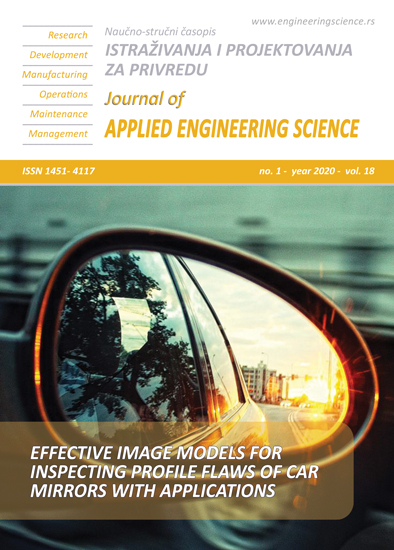ACTIVATED CARBON FROM BAMBOO WASTE : EFFECT OF ACTIVATION SEQUENCES AND IRON-COBALT IMPREGNATION TO MATERIAL PROPERTIES AND CATALYST PERFORMACE
Abstract
Bamboo “Ori” (Bambusa blumeana) is a potential raw material for activated carbon production due to rapid growth and abundant availability. Raschig ring activated carbon for industrial catalyst, catalyst support and adsorbent in purification process can be made from small diameter bamboo branches. The activated carbon as a support for Fe and Co catalysts in Fischer-Tropsch synthesis provides an opportunity for direct conversion from synthesis gas (CO and H2) to biofuel (C5-C19). The study emphasized on studying the effect of activation sequence on the activated carbon and impregnation product properties. Activated carbon, converted from bamboo waste through various activation sequences, was treated with steam, phosphoric acid and carbonization, followed by impregnation with 10% metal loading. Fe composition in the initial mixture was varied at 0-40% from total composition. After impregnation, reduction was applied by flowing hydrogen gas at 4000C for 10 hours. These catalysts were performed for Fischer-Tropsch synthesis in a batch reactors. The activation sequence of carbonization-acid and acid-carbonization gave identical surface area (2173 and 2091 m2/g), much greater than steam-carbonization-acid and steam-acid-carbonization (427 and 478 m2/g). Functionalization with nitric acid produced oxygen functional groups of carboxyl, carbonyl, alcohol and phenol. Catalyst reduction gave Fe, Co and Fe-Co alloys as active metal and little oxide of Fe2O3 and Co3O4. The larger amount of Fe-Co alloys were formed on 30Fe-70Co/Activated Carbon and 40Fe-60Co/Activated Carbon catalyst. Fischer-Tropsch synthesis in batch at H2/CO = 2, Fe-Co/activated carbon catalyst, 2500C, 8 bars for 18 hours. The n-paraffin compound is only formed in 40Fe-60Co/AC catalyst which contained the most Fe-Co alloys. The more Fe-Co alloys content was, more n-paraffin was formed. The n-paraffin (OH) compound was only formed in 10Fe-90Co/AC. The more Co content was, more n-paraffin (OH) was formed.
References
van der Laan GP, Laan GP Van Der, van der Laan GP (1999). Kinetics, Selectivity and Scale Up of the Fischer-Tropsch Synthesis
Dalai AK, Davis BH (2008). Fischer-Tropsch synthesis: A review of water effects on the performances of unsupported and supported Co catalysts. Applied Catalysis A: General 348:1–15. https://doi.org/10.1016/j.apcata.2008.06.021
Bezemer GL, Radstake PB, Falke U, et al (2006). Investigation of promoter effects of manganese oxide on carbon nanofiber-supported cobalt catalysts for Fischer-Tropsch synthesis. Journal of Catalysis 237:152–161. https://doi.org/10.1016/j.jcat.2005.10.031
Surisetty VR, Dalai AK, Kozinski J (2010). Synthesis of higher alcohols from synthesis gas over Co-promoted alkali-modified MoS2 catalysts supported on MWCNTs. Applied Catalysis A: General. https://doi.org/10.1016/j.apcata.2010.07.009
Fu T, Jiang Y, Lv J, Li Z (2013). Effect of Carbon Support on Fischer-Tropsch Synthesis Activity and Product Distribution over Co-Based Catalysts. Fuel Processing Technology 110:141–149. https://doi.org/10.1016/j.fuproc.2012.12.006
Asma IW, Rafidah J, Puad E, Shaharuddin H (2011). Production of Activated Carbon from Industrial Bamboo Wastes. 23:417–424
Liu Y, Luo J, Girleanu M, et al (2014). Efficient hierarchically structured composites containing cobalt catalyst for clean synthetic fuel production from Fischer-Tropsch synthesis. Journal of Catalysis 318:179–192. https://doi.org/10.1016/j.jcat.2014.08.006
Ip AWM, Barford JP, McKay G (2008). Production and comparison of high surface area bamboo derived active carbons. Bioresource Technology 99:8909–8916. https://doi.org/10.1016/j.biortech.2008.04.076
Cheung WH, Chan LS, Lau KST, et al (2006). Production of High Surface Area Activated Carbons from Waste Bamboo Scaffolding. 1–22
Cheung WH, Lau SSY, Leung SY, et al (2012). Characteristics of Chemical Modified Activated Carbons from Bamboo Scaffolding. 20:515–523
Figueiredo JL, Serp P (2009). Carbon Material for Catalysis. John Wiley & Sons, Inc, Hobokem New Jersey
Mukenz TM Fischer-Tropsch Reaction : Towards Understanding The Mixed Iron-Cobalt Catalyst Systems. 2010:
Ali S, Mohd Zabidi N, Subbarao D (2011). Correlation between Fischer-Tropsch catalytic activity and composition of catalysts. Chemistry Central Journal 5:68. https://doi.org/10.1186/1752-153X-5-68
Mansouri M, Atashi H (2016). Fischer-tropsch synthesis over potassium-promoted Co-Fe/SiO2 catalyst. Indian Journal of Chemical Technology
Lippens BC, de Boer JH (1965). Studies on pore systems in catalysts. V. The t method. Journal of Catalysis. https://doi.org/10.1016/0021-9517(65)90307-6
Barrett EP, Joyner LG, Halenda PP (1951). The Determination of Pore Volume and Area Distributions in Porous Substances. I. Computations from Nitrogen Isotherms. Journal of the American Chemical Society. https://doi.org/10.1021/ja01145a126
Barrett EP, Joyner LG, Halenda PP (1951). The Determination of Pore Volume and Area Distributions in Porous Substances. I. Computations from Nitrogen Isotherms. Journal of the American Chemical Society. https://doi.org/10.1021/ja01145a126
Tavasoli A, Trépanier M, Malek Abbaslou RM, et al (2009). Fischer-Tropsch synthesis on mono- and bimetallic Co and Fe catalysts supported on carbon nanotubes. Fuel Processing Technology. https://doi.org/10.1016/j.fuproc.2009.07.007

